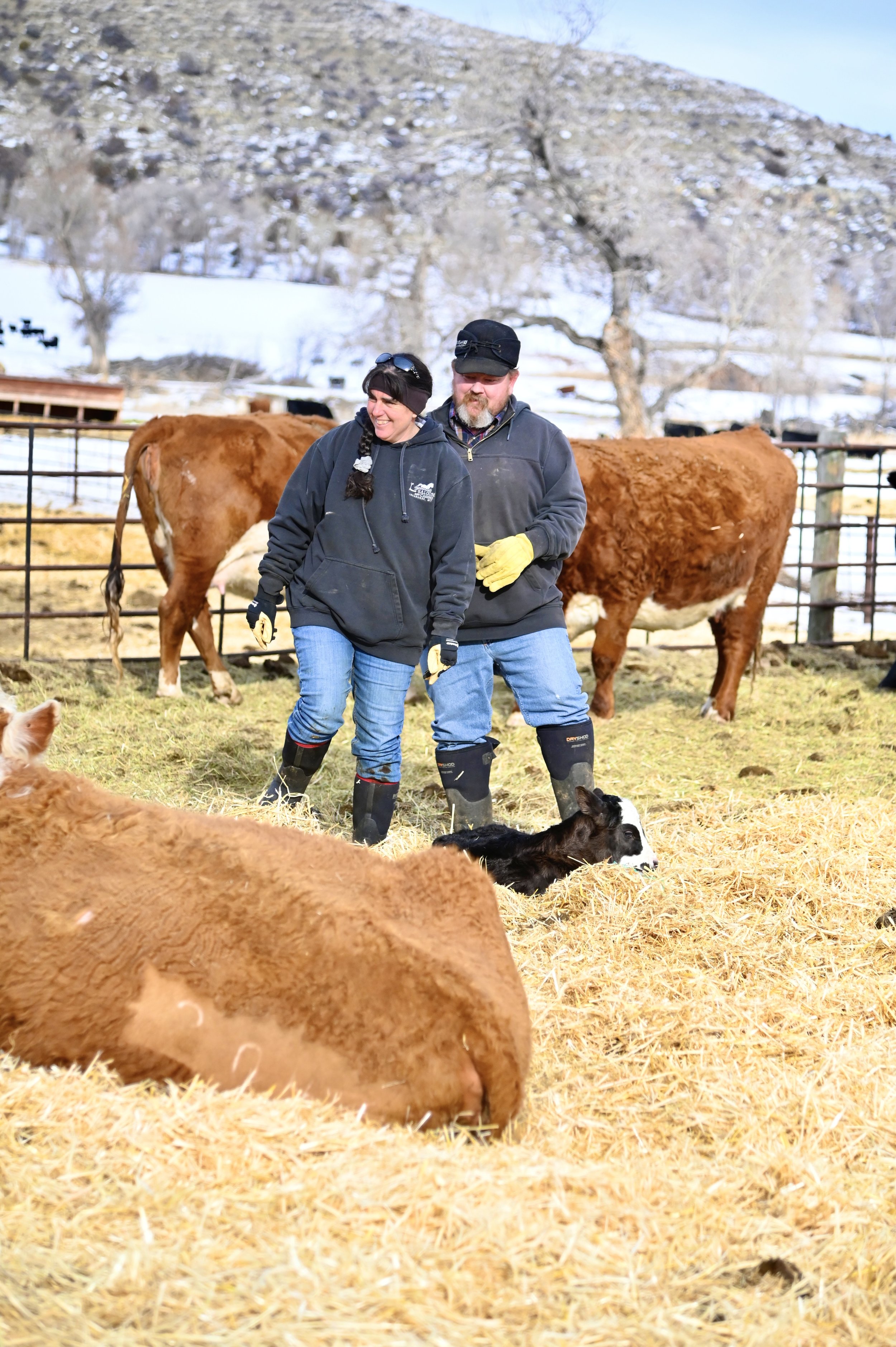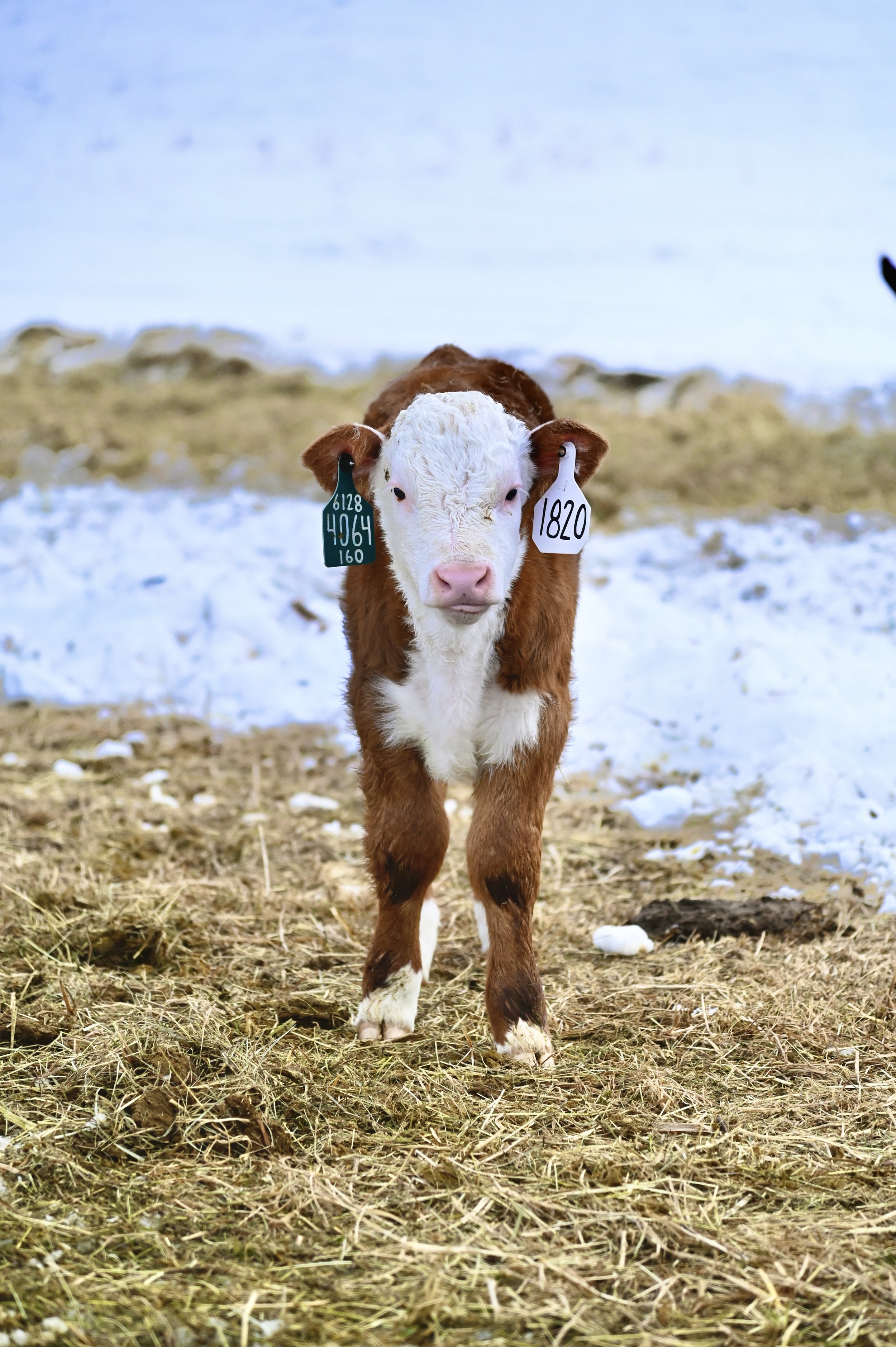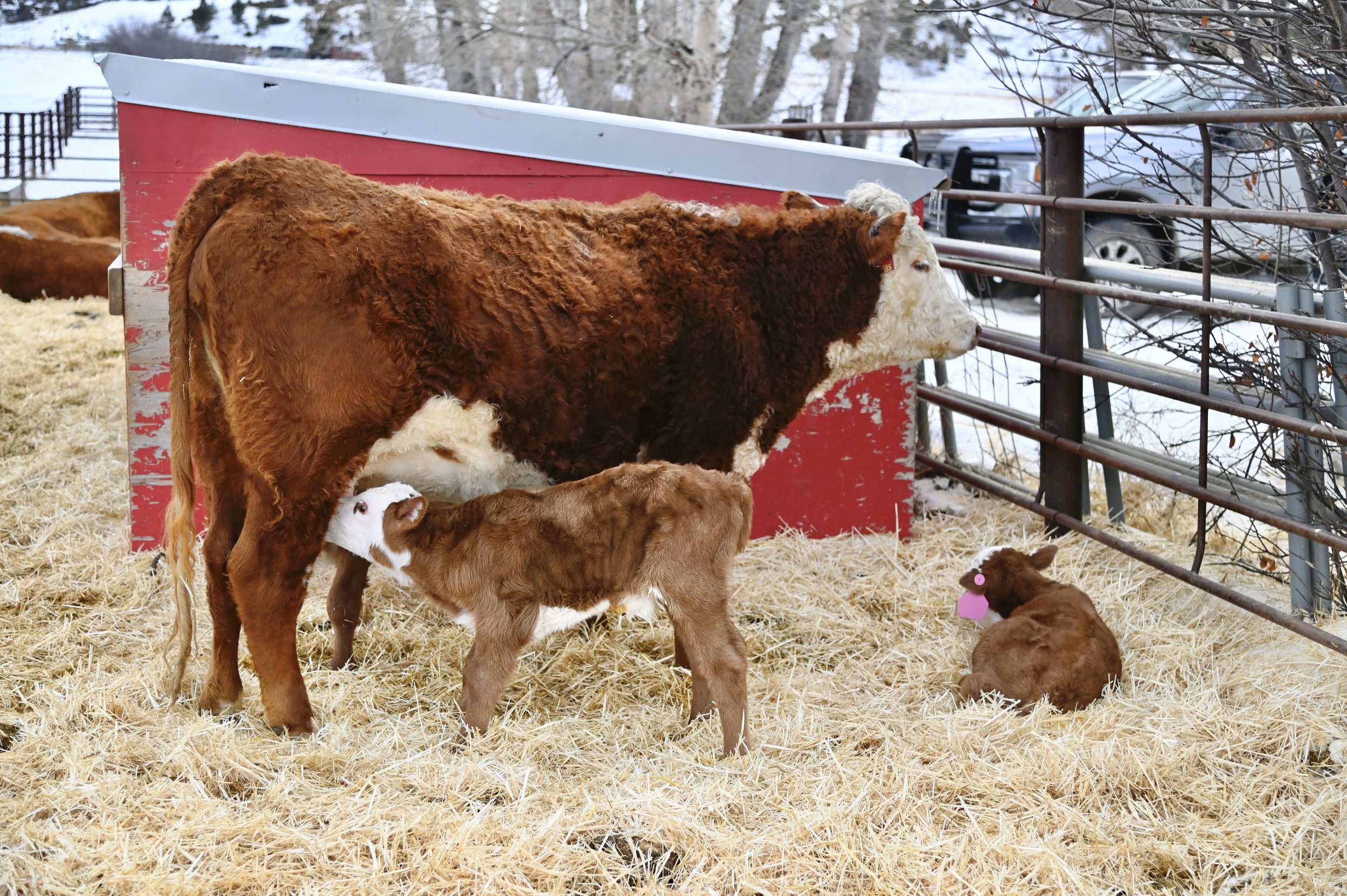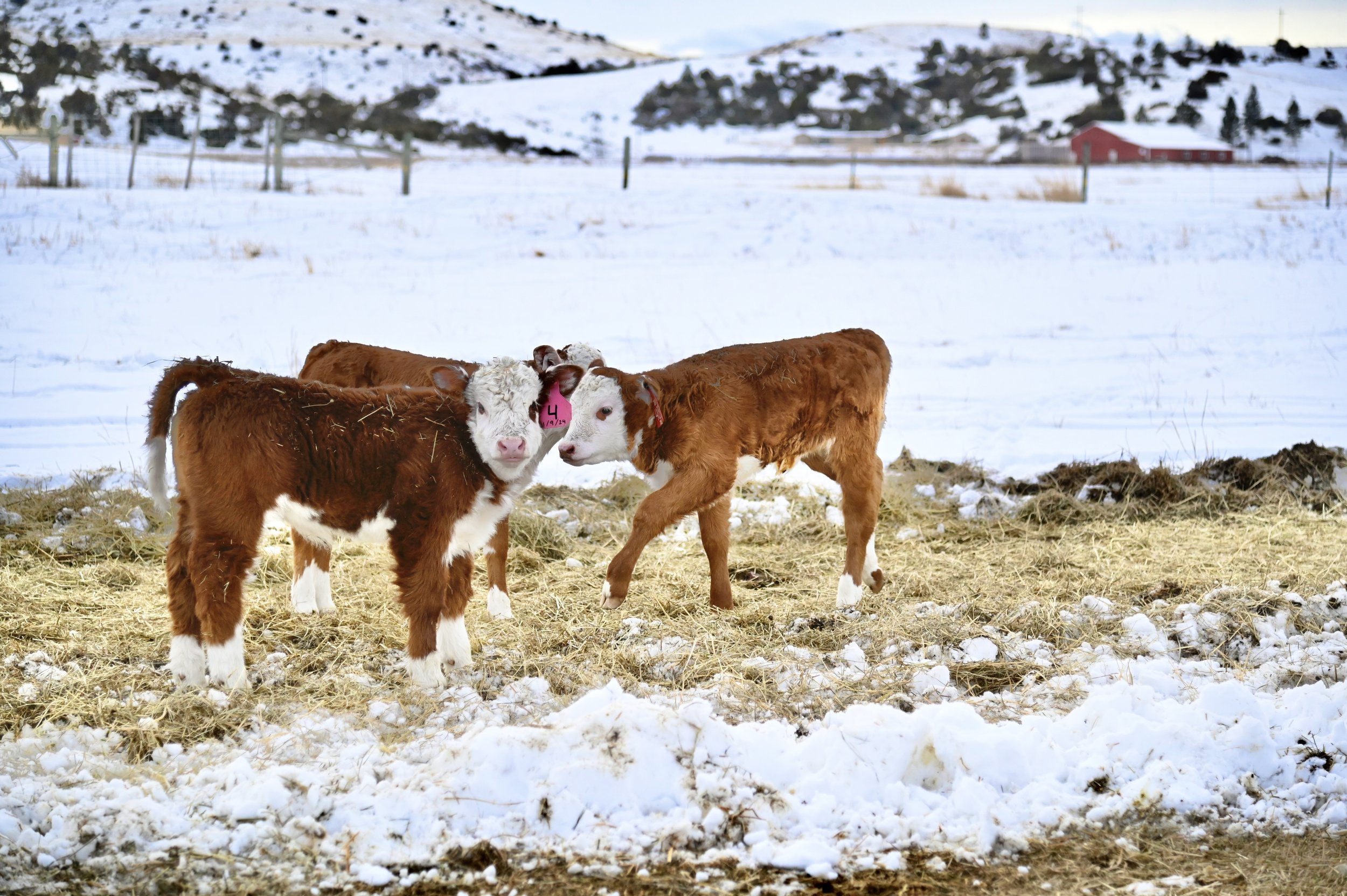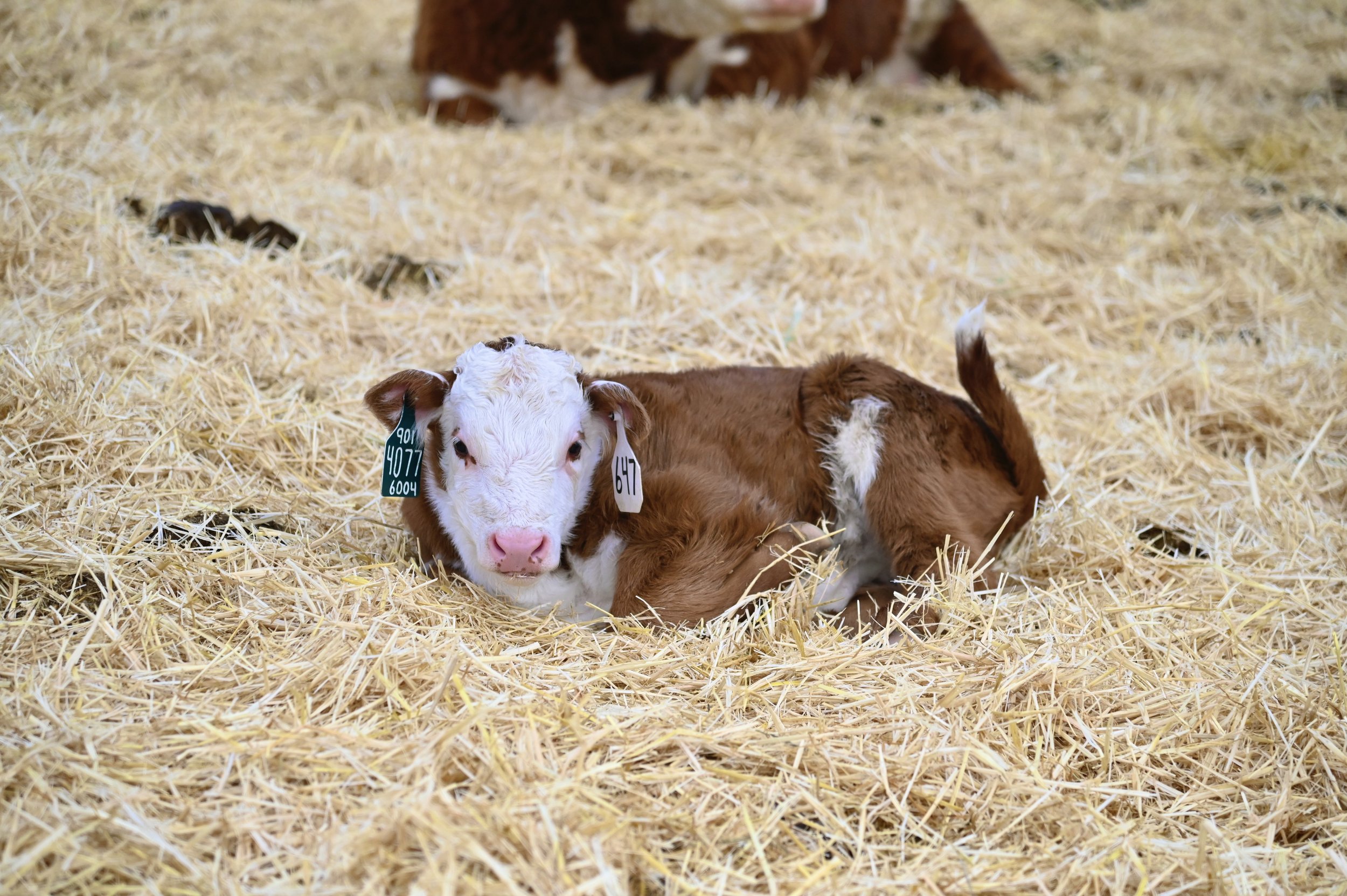When Calving and Cold Collide
L Bar W Ranch
Absarokee, MT
Written by Cyd Hoefle
Photography by Stu Hoefle
When January’s weeklong cold snap sent temperatures and wind chills plummeting to well below zero, many Montana ranchers were relieved calving season was still several months away. But for the L Bar W Cattle Company at Absarokee, the harsh conditions came right in the middle of calving season.
Carl and Denise Loyning own a seedstock Hereford operation in partnership with Mike and Jeannette Walen. Selling yearling bulls at their annual March sale requires them to be born in the first two months of the previous year. So, when the cold came this year, the Loynings were busy.
“We calve in January for a couple of reasons,” Denise explained. “We like to have calving season completely over by the time our sale comes around and, of course, we sell yearling bulls, so we breed our cows to have the bulls the right age.”
It’s a risk some ranchers take, and with Montana’s unpredictable weather, it could go either way. This year started out beautifully, with temperatures in the forties – perfect weather for the two-year-old heifers, who calve before the older cows start. In a pasture naturally sheltered by cottonwood trees, the pairs seemed to have acclimated well despite the previous cold temperatures.
“We give our first-time mommas more attention,” Denise said as she walked through the heifers and their calves. “So much is going on – they are still growing themselves and now they’re trying to nurse a calf. It’s all new to them.”
After each morning feeding, the Loynings ensure all the calves are nursing and healthy.
“We make a big investment in our replacement heifers,” Denise said. “They are our future genetics. We watch them very closely and thankfully, this year, they had all calved out by the time the weather turned.”
And when it turned, it turned with a vengeance, plummeting 60 degrees with wind chills pushing it far below zero for nearly two weeks. The subzero temperatures meant every calf born was at risk of freezing to death in a matter of minutes.
“We averaged about 15 calves every night,” Denise said. “We didn’t want anyone calving in the open or they would have lost their calves, so, it was very busy. We checked around the clock every 15 to 20 minutes. Thankfully we didn’t lose even one.”
It’s obvious the husband-and-wife duo work in an articulate and well-planned manner. With the help of a night calver, two full-time employees, and part-time day help, calving season is an “all-hands-on-deck” effort.
The calving shed resembles a maternity ward with pens just large enough for a cow and calf, with each one repeatedly occupied during the cold spell. The insulated barn hovered at 35 degrees while the outdoor temperature dropped to 45 below. In one corner is a calf incubator Carl designed. Large enough to house five calves, the electrically heated box dries the newborns quickly so they can be reunited with their mothers to begin nursing. It stayed full, too.
“We make a lot of decisions based upon weather,” Carl said. “We always have one and a half times the amount of straw we use through the winter on hand. If we know it’s going to be a harsh winter, we buy more straw. If the temperatures are going to be below zero, we plan on adding a mix to the fuel to keep the engines from gelling. We try to prepare ourselves for the extremes so that when they hit, hopefully, we’re ready.”
“Every breeding season and every winter has a new set of challenges,” Denise added. “We continually ask ourselves, what can we do differently? Let’s not dwell on what we did wrong, let’s just make it better.”
Using a combination of artificial insemination, embryo transplant, and bulls, the Loyning’s breeding program allows them to predict calving dates within days. As the season nears, a list of the cows and their due dates helps the crew efficiently rotate bred cows closer to the barn for calving.
“There’s always a few that surprise us,” Denise said. “That’s just the nature of it, but for the most part, our vet has a 99 percent accuracy for birth dates. It really helps us with the presorting and rotation.”
Every day begins with sorting cows nearing their due date and pairs ready to be turned out. As the calves get older, they are moved to pastures further from the barn. They are watched as they close in on three weeks of age, when the maternal antibodies received from their mothers have run through their system. Heavily bedded calf shelters fenced to keep cows out offer young calves reprieve from the cold. Like a nest of eggs, the calves bed down in the soft, warm straw for rest.
“We’ve been blessed with opportunities that we’ve been given. We’ve had good days and bad days and learned some things the hard way, but we feel like everything happens for a reason and we’re where we’re supposed to be right now.”
“We know we have to be ready for inclement weather,” Denise said. “We make sure we have enough feed and enough straw. Bedding to us is cheap insurance when it comes to keeping livestock warm and dry and this year, we’ve used a lot of it.”
By the fourth week in January, the temperatures climbed back into the forties and the barn was empty as cows were allowed to calve in the open. Newborn calves were enjoying the sunshine and frolicking around their mothers, while the cows munched on hay. As the month drew near closing, the season for the Loynings was barely half over with 150 cows left to calve.
Staying strong and steady though their energy waned, Carl and Denise could finally see the light at the end of the calving tunnel, but the work was far from over. Even as their minds remained on calving, they were thinking about their annual production sale in March and the work that needs to be done to prepare for it.
“The bulls we have this year look good,” Carl said. “Every year we do a little bit better. Our bulls are guaranteed, and we stand behind everything we sell.”
“We’ve been blessed with opportunities that we’ve been given,” Denise concluded. “We’ve had good days and bad days and learned some things the hard way, but we feel like everything happens for a reason and we’re where we’re supposed to be right now.”


